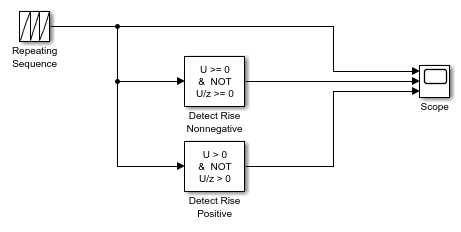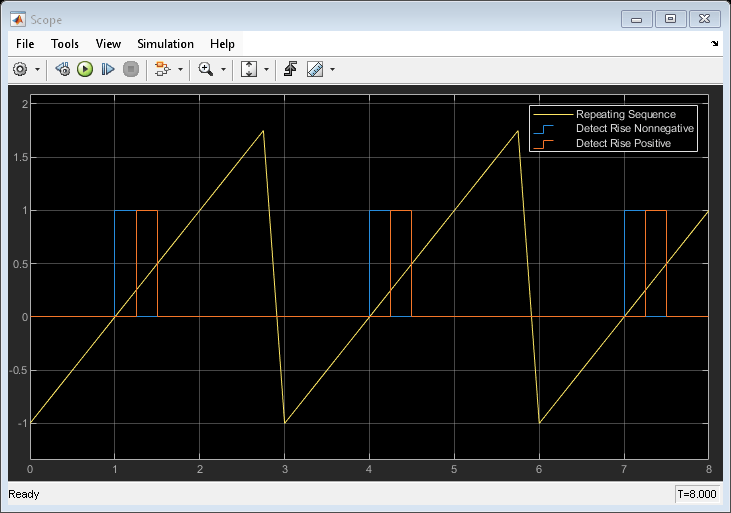Detect Rise Positive
上升沿检测,当信号值从上一个严格意义上的负值变为非负值时
库:
Simulink /
Logic and Bit Operations
描述
Detect Rise Positive 模块通过确定输入是严格正值且上一个值是非正值来检测上升沿。
当输入信号大于零且上一个值小于或等于零时,输出为 true(等于
1)。当输入信号为负或为零时,或者当输入信号为正、上一个值也为正时,输出为 false(等于
0)。
此模块仅支持离散采样时间。
示例
端口
输入
输出
参数
模块特性
数据类型 |
|
直接馈通 |
|
多维信号 |
|
可变大小信号 |
|
过零检测 |
|
扩展功能
版本历史记录
在 R2006a 之前推出

